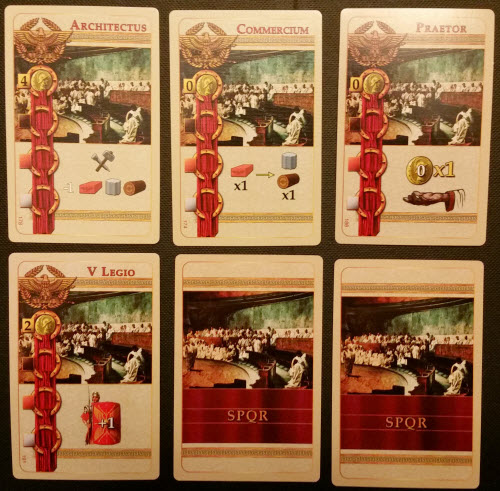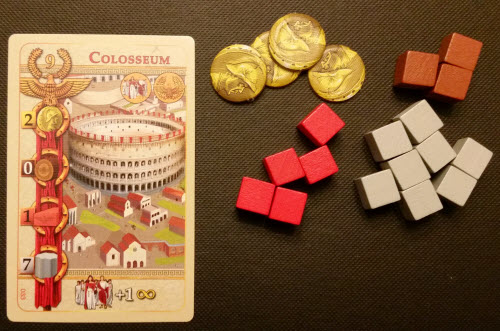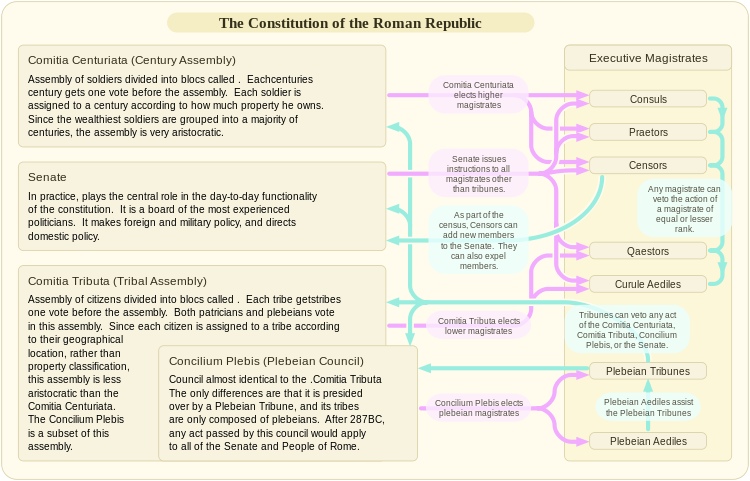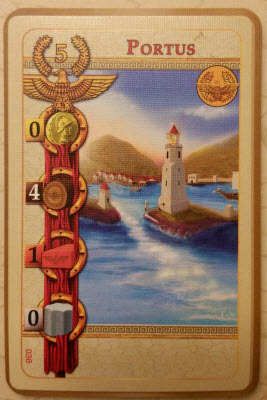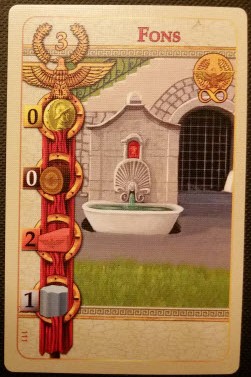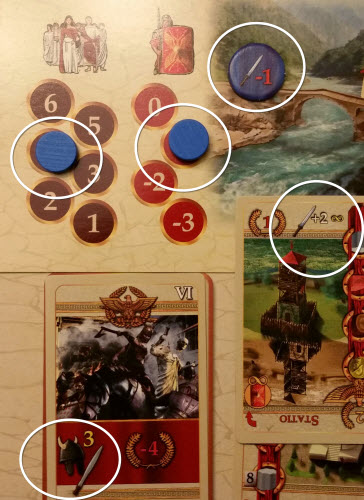Hail legatus Augusti. We are glad you’ve arrived safely, and none too soon. The men are rested and eager for a leader’s keen directions such as yours on how best to proceed. We are aware that the fighting continues in the central provinces, and the war has decimated what little structure this wild land and its equally wild people have to offer. A village to the north has been spared from destruction though and has become our de facto encampment. Our instructions were to remain in this valley and secure supply routes back to Rome. Aside from occasional raids, progress is being made to that end. As such, we have turned our attention to more civilian matters. We stand ready.
Paullus Marcellinus, Legio septima Claudia Pia Fidelis
The Premise
At the climactic height of Julius Caesar’s campaign to conquer Gaul, players have been dispatched to the controlled lands with the directive of developing them to meet Roman standards. With the promotion to Proconsul on the line, players must use their limited time and resources to make decisions on how to best construct buildings, establish better ties with Rome, and defend their new city from enemy raids.
The Rules
Provincia Romana is a moderate card drafting game with minor setup effort required. The game principally consists of three building resources, gold, and four decks of cards: Opes (Resources), SPQR (Senate), Aedificium (Buildings), and Bellum (Battle). All Opes and SPQR cards are used, as is most of the Aedificium Deck. However, only four Bellum cards are used each game.
To begin, each player receives a city board replete with a starting building, gold, an Aedificium card, and a handful of battle tokens. City boards come with two tracks – Defense and Morale. Players also receive starting resources as depicted in the rule book, varying depending on the number of players and turn order. The starting player in Provincia Romana is determined randomly.
The game is played out over six rounds, each divided into five phases – Card Selection, Card Playing, Battle, Upkeep, and Building Activation. Each phase is taken in turn order.
In Card Selection, the first player selects a deck and puts six cards into play. The first player selects a card and either adds it to their hand (in the case of SPQR or Aedificium cards), or collects the resources depicted and discards it (in the case of Opes cards). Each other player then does the same. Then, the next player selects a deck and repeats the process. No deck may be selected more than twice per round.
Once every player led a deck draft, players may play cards by spending their requisite costs. These cards provide various benefits, such as increases to Defense, Morale, resources, or VP. Most SPQR cards are one-time use, although some of them – as well as all Buildings – are added to a player’s tableau. Unless a Building has the ∞ symbol, players are limited to one named Building per city.
Then, in the Battle phase, players defend their burgeoning city from an attack by the Gauls. First, each player secretly adds a battle token to the fight, which will either help or hurt the depicted player’s total. Next, a Bellum card is revealed, showing the attacker’s strength. If a player’s combined Defense, Morale, Military and battle token values meet or exceed the attacker’s strength, they pass. Otherwise they suffer the listed consequences.
Afterwards, in the appropriately named Upkeep phase, players adjust their city’s Morale and Defense values down one rank and pay one gold in taxes to Rome.
Finally, in Building Activation, players now have the chance to “activate” certain inert Buildings. These Building cards do not provide their benefits until they are activated at this point.
Then the first player rotates and the next round begins.
After the sixth round, the game is over. Players convert remaining gold to VP and add up their scores. The player with the highest VP total is the Imperial Legate who has done the best job of growing their city in a foreign land, ushering in civilization with one hand and fending off attackers with the other. That player has earned the respect of Rome and is awarded the Proconsul of Gaul.
Everyone else is feel free to try their luck again in the Brittania campaign.
Roman Bureaucracy
If you think that the parliamentary and congressional bodies of today’s era are complicated, ancient Rome would surprise you. Prior to Caesar putting the nail in the coffin of the Republic, ancient Rome ruled via a convoluted mix of Senators, powerful elected magistrates, military leaders, and even the general public.
When you add in the fact that the Republic’s government was determined more by precedent and tradition than written documentation, the rule of law often shifted around over time. Navigating Rome’s political system was confusing enough for those living through it, let alone little Timmyus Maximus studying for his World History final.
It’s perhaps fitting, then, that Provincia Romana instills some of that same cross-eyed confusion.
This game is not a complicated affair, but it can feel that way initially. The turn structure is easy to follow, and although cards almost entirely forgo text in favor of iconography, every card is explained at the back of the rule book. So they aren’t problematic once understood. However, while this makes the game more universally accessible, it also means you’ll need a couple playthoughs before being able to play without looking up each card. What little text the game does use is entirely in Latin, which, while adding a healthy dose to the game’s Roman flavor, doesn’t help the learning curve either.
That being said, this has less of an impact on the game’s efficacy than the multitude of rules exceptions ranging from puzzling to unnecessary, with ones such as:
- You can trade gold for Wood or Stone, but not Clay.
- The Aedificium and SPQR Decks are drafted one way, the Opes Deck another.
- All SPQR cards are one-time use…unless they’re one of the handful that stay in play.
- Two Building cards restrict whether or not you can use them simply based on which player board you have – and that’s only explicitly mentioned when looking them up.
Moreover, while skipping the Battle phase the first round makes sense, skipping it during the fourth doesn’t. Also, when drafting cards, what does having two of them face down do besides adding randomness?
Individually these rules are minor, but when taken as a whole they feel like the game unduly hinders itself, which is unfortunate as Provincia Romana has an otherwise likable premise.
We blame all of that Roman red tape.
Those Galling Gauls
Nothing exemplifies this wonky behavior more than the game’s Battle phases. For a game whose concept centers around creating a city and then defending it from Gallic attacks, the combat side of Provincia Romana comes across as underdeveloped.
The main reason for this is that the payoff doesn’t match the effort being asked of you. For starters, the game has multiple fronts where you can manipulate the outcome of battle, from buildings that raise your city’s Morale or Military, to cards that raise your city’s Defense. Thus, even though your Morale and Defense values drop every round, you’re rarely in a position where you can’t cobble together these values in some combination to fend off the Gauls.
More to the point: all of these values are effectively the same. Not only are all three values solely used just to stave off an attack, you aren’t rewarded for focusing on one type of protection over another. There also isn’t any benefit for, say, having a higher Military strength than other players.
Meticulously maintaining these values would also be more meaningful if the battles themselves were equally challenging or rewarded you for your troubles. Instead, fights are quickly resolved and generate little tension. Although combat is straightforward and unencumbered, they also aren’t very linear. During each of the four battles, the attacker’s strength is always randomly between 2 and 6. This makes each combat more unpredictable, but it also means that you can get saddled with a 5-value invader in the second round but face a 2-value one in the sixth. That uneven dispersal of force makes the fights anticlimactic.
We’re not sure how wars can be uneventful, but this game found a way.
The only real combat surprises come via the battle tokens, which are both fiddly and thematically out of place. Whether they represent the fog of war or the scheming machinations of your political rivals is unclear, but these tokens are usually the determining factor over whether a player succeeds or not.
Yet besides being able to potentially sabotage another player’s chances, they are superfluous and add little to the gameplay beyond adding another degree of randomness to an already random game.
To top it all off, the best thing that can happen to you at the end of combat is, well, nothing. Stopping the attackers means nothing happens, while losing to them can be costly in the often tightly contested games of Provincia Romana.
Most of the time, the game’s battles feel unnecessarily complex and artificially difficult given how much effort goes into preparing for them versus the outcomes of a mere four skirmish encounters.
Ultimately, all of this will give Immersionists pause. The game has a simple thematic concept, but it’s flavorful without being very deep. There’s also a lot going here on to disrupt their suspension of disbelief over being an ancient Roman city builder.
A Rosa By Any Other Name
Even with all of this information laid bare, Provincia Romana is not without merit. The core aspect of the game – drafting cards and building structures – is entertaining and fundamentally sound. Even with some of its extraneous rules, Architects will still enjoy picking which cards best suit their expanding Roman city, and while it likely won’t hold up after a significant number of playthroughs, there’s still enough pieces moving in this game for many Tacticians to feel like there is a viable challenge.
On the other hand, the wilderness of Gaul won’t be suitable for Socializers, namely because of the time factor. 2-3 player sessions of Provincia Romana can be finished in under an hour, but with little player interaction beyond drafting, even that time span will make this group wish their campaign were over. Ironically though, the game is the weakest with four players, and adding additional players doesn’t raise the play time substantially.
Similarly, Strikers should stay in Rome. Besides battle tokens and an SPQR card or two, there is little you can do to directly impact your opponent’s territory, and although the game has a straightforward goal, they’ll quickly be put off if their all of their efforts are undone by poor card reveals or a random lost battle.
Daredevils, surprisingly, will also have a difficult time. Card drafting games often have multiple means of achieving victory, but Provincia Romana is pretty direct: avoid loses from Battle cards and build as much as possible. Even for a card game, there’s little room to explore multiple VP options, which is far more of a regimented approach than they’d prefer. (If anything, they’d probably prefer fighting on the Gallic side.)
The Takeaway
With a mere six rounds and an easy to follow turn structure, Provincia Romana should flow like water through the Tiber River. Yet a series of self-imposed obstacles makes this journey more difficult than it needs to be. Although flavorful, in many ways Provincia Romana tries too hard to infuse deeper substance into a simple card drafting game. Frankly, the game has all of the right materials for an easygoing exercise in building and defending rival cities, but between the inclusion of some seemingly arbitrary mechanics and an underwhelming battle system, the game often gets in its own way. Alas, a model of Roman efficiency it is not. Nevertheless, while a bit clunky, Provincia Romana can still be a rewarding experience for those who enjoy basic tableau games with a healthy share of unpredictability.
Provincia Romana is a product of Passport Game Studios.
Cardboard Republic Snapshot Scoring (Based on scale of 5):
Artwork: 3
Rules Clarity: 3.5
Replay Value: 3
Physical Quality: 4
Overall Score: 3.5
Photo Credits: Roman Constitution by Wikipedia.

